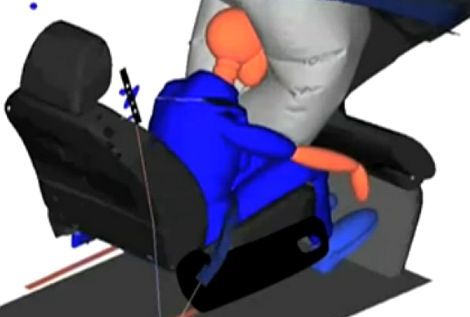Crash-test dummies constitute humanoid test devices used in simulated vehicle collisions. For many years those anthropomorphic devices were physical dummies of adults and children. Now begins the era for dummies to become virtual. They are digitalized similarly to avatars, and biologically modelled as any virtual physiological human.
Research in digital child crash dummy is lead by dr. Stephen Rouhana, senior technical leader for safety at Ford Motor Company research centre. He is not only an internationally recognized expert in the area of human response to impacts, but also a father of three children, which inspired him, among others, to create a dummy test to determine the effect of the belt’s air bag inflation on a sleeping child.
To create the future safety technologies, Ford developed a six-year-old virtual child, as presented on the video below. Its virtual body parts and virtual organs will be precisely replicated in order to better understand how the child’s body responds in a crash. Research on virtual children’s safety is based on detailed digital adult dummy behavior, which Ford has been developing for about 11 years.
The better we simulate humans, the better we emulate human emotions, and we know more about modeling non-verbal responses to the environment. Which, combined with verbal skills, contributes to more and more realistic conversations leaded by chatbots. Such a long term development can be achieved only on the basis of many innovational research experiences collected together. Therefore, even thought virtual child dummy may seem to be valuable only for crash tests at first, after a deeper insight it appears to be an innovation impacting strongly the improvement of talking virtual humans as well.


